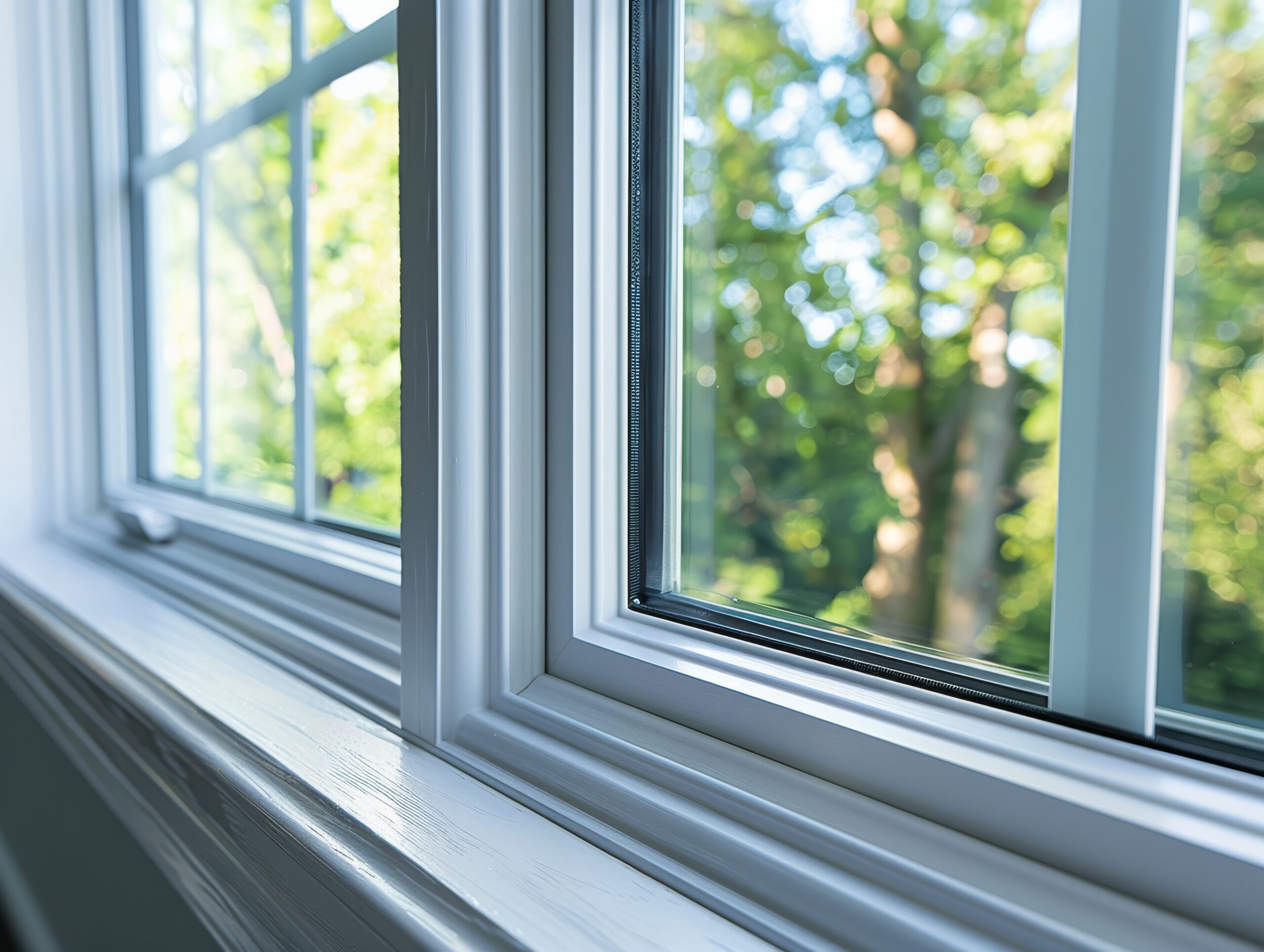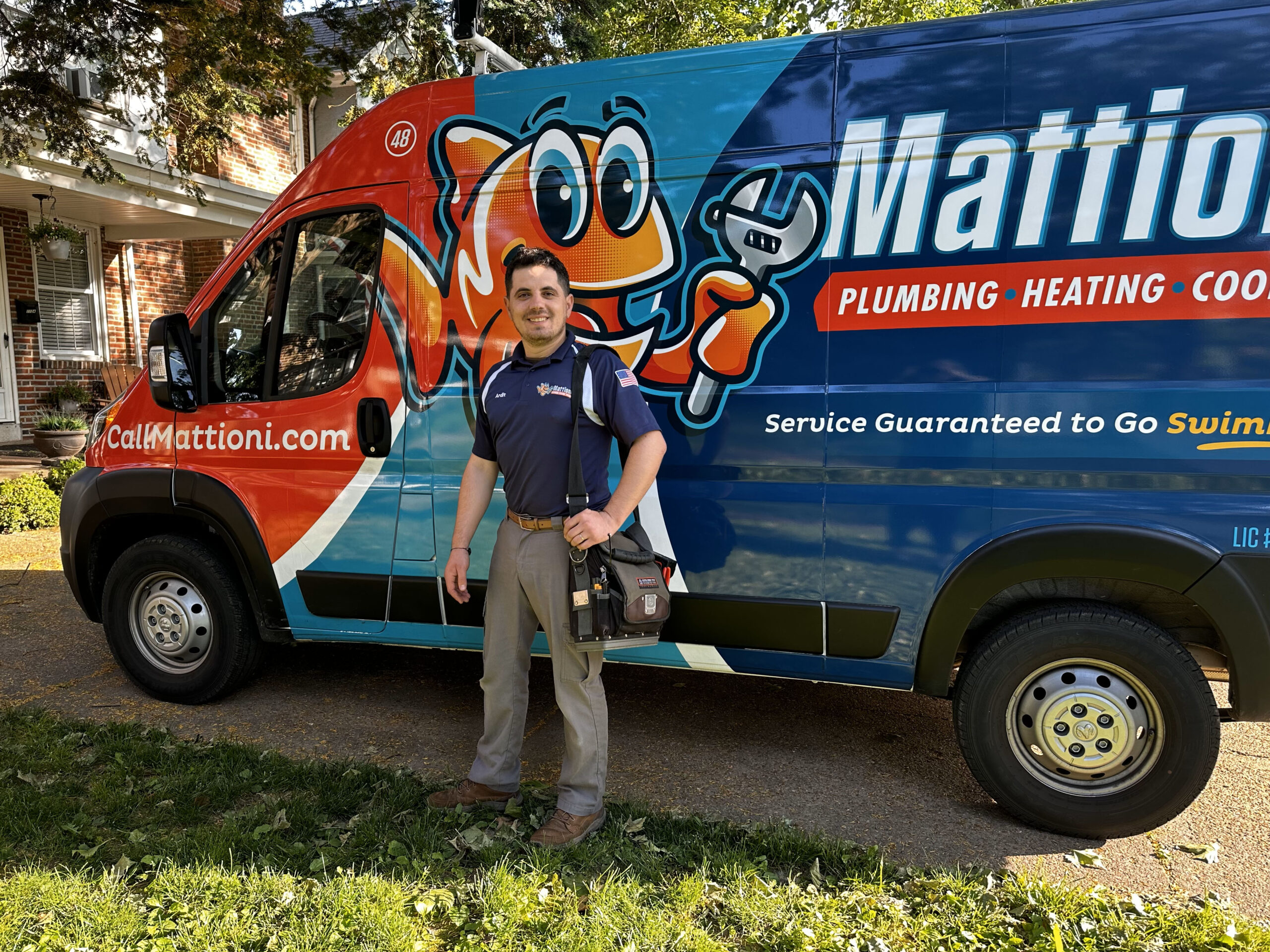|
Getting your Trinity Audio player ready...
|
Last Revised: 10/15/25
Have you ever wondered why modern heating systems don’t rely on a chimney the way the older ones did? Have you heard a fan running inside your furnace right before the heat kicks on?
That small fan you hear is part of an induced draft heating system – a design built into most modern furnaces to improve both safety and efficiency. It’s job is to pull harmful combustion gases (like carbon monoxide) out of the system and vent them outside safely outside.
At Mattioni, we’ve been guiding homeowners in the West Chester, PA and surrounding areas for over 75 years. We know the stress that comes with a broken furnace, and we believe in giving clear, honest, and understandable answers – not technical jargon.
In this article, we’ll walk you through everything you need to know about induced draft heating systems. After reading, you’ll understand how they differ from natural draft designs, what their role is in safety and efficiency, the most common problems they face, and what your options are when repairs or replacements come up.
What Is an Induced Draft Heating System?
An induced draft system is a modern ventilation design that uses a small motorized fan – called an inducer fan – to pull combustion gases through the furnace’s heat exchanger and push them safely out of your home through the vent pipe.
Unlike natural draft (atmospheric) systems, which rely on hot air to rise through a chimney, induced draft systems take direct control of airflow. The inducer fan turns on before the burners ignite to clear any remaining gases and to ensure airflow is strong enough for safe combustion. This airflow is verified by a pressure switch, which won’t allow the furnace to light unless conditions are safe.
This makes induced draft systems far more reliable and much safer for tightly built homes, which lack the loose airflow older systems depended on. They also enable higher energy efficiency by improving combustion performance and reducing heat loss that occurs through the flue.
How Does an Induced Draft Furnace Work?
Here’s what happens within an induced draft furnace when the thermostat calls for heat:
- The inducer fan motor starts running. This clears out any leftover combustion gases from the previous cycle and pulls fresh air into the combustion chamber.
- The pressure switch activates. It confirms that airflow through the furnace is strong and safe.
- The ignition sequence begins. Depending on your system, this might be a spark ignitor or hot surface ignitor.
- Gas flows to the burners, and combustion begins.
- Heat is transferred through the heat exchanger into the air in your ductwork.
- The blower fan starts, pushing warm air through your home.
- The inducer fan continues running until the combustion cycle ends, venting all remaining gases outside.
If the inducer fan stops functioning properly, no combustion or heating will occur and the system will lock itself out to prevent unsafe operation.
What Are the Benefits of Induced Draft Systems Compared to Natural Draft?
The biggest advantage of induced draft heating systems is control. Where natural draft (atmospheric) systems are impacted by airflow conditions outside your control (things like wind, air pressure, and chimney height), induced draft systems use a powered fan to ensure venting works every time.
This brings three major benefits:
- Safety: Induced draft fans help prevent backdrafts and reduce carbon monoxide risk.
- Efficiency: They enable better combustion and reduce wasted heat escaping through the vent.
- Compatibility with modern homes: Sealed and insulated homes can’t rely on passive airflow – but induced draft fans can still vent reliably.
This upgrade has become standard in nearly all gas furnaces installed since the 1990s.
What Can Go Wrong with an Induced Draft System?
Like any motorized part, the inducer fan can wear out over time. Problems usually fall into one of these categories.
- Electrical failure, such as won-out motor or bad capacitor.
- Mechanical wear, often indicated by grinding or squealing noises at startup.
- Obstructions, including leaves, bird nests, or ice in the vent pipe.
- Pressure switch issues, which can falsely detect airflow problems and stop the furnace from running.
- Most inducer fans are designed to last 10-15 years, depending on how often the furnace runs and how well it’s maintained.
How Do I Know If My Inducer Fan Is the Reason My Furnace Won’t Start?
Here are the most common signs your inducer fan is preventing your system from running:
- Your furnace makes a humming or whirring sound, but the burners never ignite.
- You hear the system trying to start, followed by a click and shutdown.
- Your thermostat shows a system error or diagnostic code.
- You hear grinding or buzzing from the furnace at startup.
The furnace is trying to begin its heating cycle, but the inducer fan is either not operating correctly, or airflow isn’t sufficient to satisfy the pressure switch. Either way, the system won’t allow combustion to proceed – and that’s a good thing as it’s designed to fail safely.
Can I Fix an Inducer Fan Myself?
We strongly recommend against DIY repairs – the inducer fan is tied into your furnace’s safety system, and improper handling can lead to gas leaks, carbon monoxide exposure, or damaged electrical components.
A professional technician can test the fan motor, confirm airflow with specialized tools, and check the pressure switch and venting system for related issues. In many cases, the problem isn’t the inducer fan itself, but something blocking airflow or miscommunicating with the control board.
Should I Repair the Inducer Fan or Replace My Heating System?
If your furnace or boiler is under 10 years old and hasn’t and many repairs, a fan motor replacement is a smart investment. However, if your heating system is over 12-15 years old, having frequent ignition or airflow issues, and heating unevenly (or making your utility bills climb), then it may be time to consider replacement. We’ll help you compare costs, available rebates, and efficiency gains to make the best long-term choice.
How Can I Prevent Inducer Fan Problems?
You can reduce the risk of failure by scheduling annual furnace maintenance. During a tune-up appointment, an HVAC technician will:
- Inspect and test the inducer fan motor
- Confirm the pressure switch is reading accurately
- Check the vent system for obstructions or condensation
- Ensure electrical connections are secure and free of corrosion
One simple task you can handle between tune-ups is replacing your air filter once every 1-3 months. Keeping your air filters clean and making sure your exterior vents stay clear of debris also helps protect the system between visits.
Why the Induced Draft System is So Important
Your furnace’s ability to start safely and heat efficiently depends on more than just the burners. The induced draft system plays a critical role in clearing harmful gases, controlling combustion airflow, and ensuring your home stays safe and comfortable.
While natural draft chimney systems rely on atmospheric pressure and temperature to expel gases, induced draft systems proactively take control with precision and safety controls – which is why they’re standard in every modern furnace. If your system isn’t starting, or if you hear odd noises at startup, it could be your inducer fan – and it’s time to act before the cold sets in.
Need Help with a Furnace That Won’t Start? We’ve Got You Covered.
Now you know what an induced draft system is, how it compares to older natural draft designs, and what your options are if repairs are needed. With this knowledge, you can avoid confusion, prevent costly breakdowns, and have confidence in the choices you make for your home.
Acting quickly when a furnace issue pops up is the best way to preserve your peace of mind, safeguard your home’s comfort, and protect your HVAC investment.
At Mattioni, we’re your guide towards making the right decision for your home. With over 75 years of trusted service, we’ll diagnose your system honestly, explain your options clearly, and handle the repair or replacement with expertise.
If your furnace won’t start, is making unusual noises, or showing error codes, don’t wait – call Mattioni today at (610) 400-8510 or schedule your appointment online. We’ll make sure your system is running as it should, so you can stay warm, safe, and worry-free all winter long.




